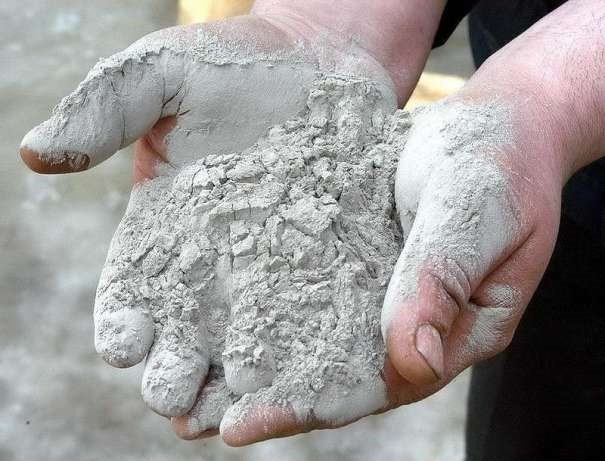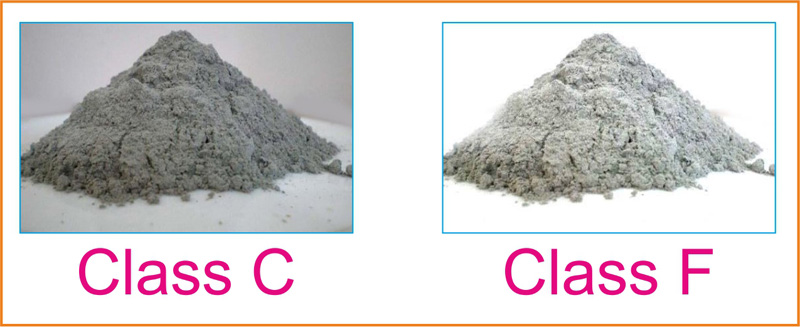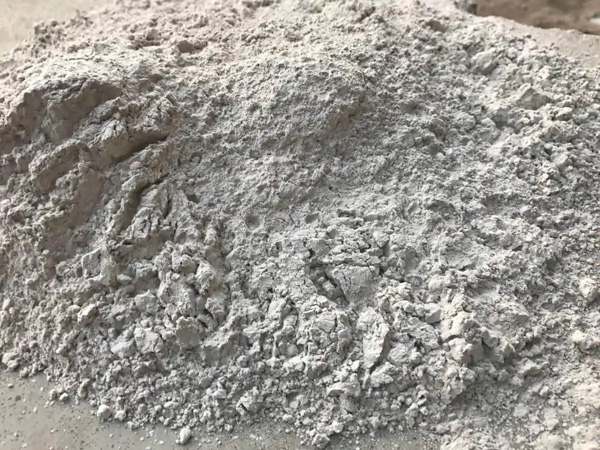Fly ash improves concrete’s workability, pumpability, cohesiveness, finish, ultimate strength, and durability as well as solves many problems experienced with concrete today–and all for less cost. Fly ash, sometimes called flue ash, has been a popular supplementary cementitious material (SCM) since the mid-1900s. For most concrete producers, fly ash is an important ingredient in concrete mix designs. Depending on the application, the type of fly ash, specification limits, geographic location, and climate, fly ash can be used at levels ranging from 15% to 25% (most common) to 40% to 60% (when rapid setting time is not required), reducing emissions by roughly the same amount—and helping to keep concrete products at an affordable price.
Fly ash is produced by coal-fired electric and steam generating plants. Typically, coal is pulverized and blown with air into the boiler’s combustion chamber where it immediately ignites, generating heat and producing a molten mineral residue. Boiler tubes extract heat from the boiler, cooling the flue gas and causing the molten mineral residue to harden and form ash. Coarse ash particles, referred to as bottom ash or slag, fall to the bottom of the combustion chamber, while the lighter fine ash particles, termed fly ash, remain suspended in the flue gas. Prior to exhausting the flue gas, fly ash is removed by particulate emission control devices/

Fly ash benefit in concrete
Fly ash is a pozzolanic material. It is a finely-divided amorphous alumino-silicate with varying amounts of calcium, which when mixed with portland cement and water, will react with the calcium hydroxide released by the hydration of portland cement to produce various calcium-silicate hydrates (C-S-H) and calcium-aluminate hydrates. Some fly ashes with higher amounts of calcium will also display cementitious behavior by reacting with water to produce hydrates in the absence of a source of calcium hydroxide. These pozzolanic reactions are beneficial to the concrete in that they increase the quantity of the cementitious binder phase (C-S-H) and, to a lesser extent, calcium-aluminate hydrates, improving the longterm strength and reducing the permeability of the system. Both of these mechanisms enhance the durability of the concrete. The performance of fly ash in concrete is strongly influenced by its physical, mineralogical and chemical properties. The mineralogical and chemical composition are dependent to a large extent on the composition of the coal and since a wide range of domestic and imported coals.
For mix design purposes, fly ash itself should be considered like portland cement, except that the specific gravity for fly ash is different. The specific gravity of portland cement is typically 3.15, while the specific gravity of fly ash may range from 2.2 to 2.8, depending on fly ash composition. Therefore, if a certain percentage of cement is replaced with fly ash on a mass basis, simply multiply the initial portland cement quantity by the percent replacement. For some fly ashes, particularly low calcium Class F fly ashes, higher replacement rates (1.2:1 up to 2:1) are required to maintain equivalent early concrete strength. The next modification to the concrete mix design involves the water content. Due to the particle shape of fly ash, the water demand is typically reduced, up to 5% less with Class F fly ash, and up to 10% less with Class C fly ash (this may also be accomplished by a partially lowered chemical admixture dosage). The final step, as with traditional mix designs, involves adjusting the aggregate content for proper yield. Simply sum up the aggregate, cementitious materials, water, and air volumes, subtract from 27.0 ft3, and that amount should be added (or subtracted) with aggregate volume (typically fine aggregate is used for small modifications to mix design).

Advantages of Fly Ash in Concrete
The most important benefit is reduced permeability to water and aggressive chemicals. Properly cured concrete made with fly ash creates a denser product because the size of the pores are reduced. This increases strength and reduces permeability.
Today, there are at least two ways to make fly ash more beneficial: a dry process that involves triboelectric static separation and a wet process based on froth flotation. These procedures generally lower the carbon content and the LOI of fly ash. The cost of an additional storage bin should be easily covered by the reduction in the cost of the concrete and the added benefits to the concrete. Low-carbon fly ash or the use of a better air-entraining agent at a higher-than-usual addition rate can control the problem of freeze-thaw durability.
Advantages in Fresh Concrete
Since fly ash particles are spherical and in the same size range as portland cement, a reduction in the amount of water needed for mixing and placing concrete can be obtained. In precast concrete, this can be translated into better workability, resulting in sharp and distinctive corners and edges with a better surface appearance. This also makes it easier to fill intricate shapes and patterns. Fly ash also benefits precast concrete by reducing permeability, which is the leading cause of premature failure. The use of fly ash can result in better workability, pumpability, cohesiveness, finish, ultimate strength, and durability. The fine particles in fly ash help to reduce bleeding and segregation and improve pumpability and finishing, especially in lean mixes.
Advantages in Hardened Concrete
Strength in concrete depends on many factors, the most important of which is the ratio of water to cement. Good quality fly ash generally improves workability or at least produces the same workability with less water. The reduction in water leads to improved strength. Because some fly ash contains larger or less reactive particles than portland cement, significant hydration can continue for six months or longer, leading to much higher ultimate strength than concrete without fly ash.
Different types of Flyash

Fly-ash categories
Two classes of fly ash are defined by American Society for Testing and Materials (ASTM) C618: Class F fly ash and Class C fly ash. The chief difference between these classes is the amount of calcium, silica, alumina, and iron content in the ash. The chemical properties of the fly ash are largely influenced by the chemical content of the coal burned (i.e., anthracite, bituminous, and lignite). Not all fly ashes meet ASTM C618 requirements, although depending on the application, this may not be necessary. Fly ash used as a cement replacement must meet strict construction standards, but no standard environmental regulations have been established in the United States. Seventy-five percent of the fly ash must have a fineness of 45 µm or less, and have a carbon content, measured by the loss on ignition (LOI), of less than 4%. In the US, LOI must be under 6%.
The particle size distribution of raw fly ash tends to fluctuate constantly, due to changing performance of the coal mills and the boiler performance. This makes it necessary that, if fly ash is used in an optimal way to replace cement in concrete production, it must be processed using beneficiation methods like mechanical air classification. But if fly ash is used as a filler to replace sand in concrete production, unbeneficiated fly ash with higher LOI can be also used. Especially important is the ongoing quality verification. This is mainly expressed by quality control seals like the Bureau of Indian Standards mark or the DCL mark of the Dubai Municipality.
Class “F” The burning of harder, older anthracite and bituminous coal typically produces Class F fly ash. This fly ash is pozzolanic in nature, and contains less than 7% lime (CaO). Possessing pozzolanic properties, the glassy silica and alumina of Class F fly ash requires a cementing agent, such as Portland cement, quicklime, or hydrated lime-mixed with water to react and produce cementitious compounds. Alternatively, adding a chemical activator such as sodium silicate (water glass) to a Class F ash can form a geopolymer.
Class “C” Fly ash produced from the burning of younger lignite or sub-bituminous coal, in addition to having pozzolanic properties, also has some self-cementing properties. In the presence of water, Class C fly ash hardens and gets stronger over time. Class C fly ash generally contains more than 20% lime (CaO). Unlike Class F, self-cementing Class C fly ash does not require an activator. Alkali and sulfate (SO4) contents are generally higher in Class C fly ashes.
The primary difference between Class C and Class F fly ash is the chemical composition of the ash itself. While Class F fly ash is highly pozzolanic, meaning that it reacts with excess lime generated in the hydration of portland cement, Class C fly ash is pozzolanic and also can be self cementing.

